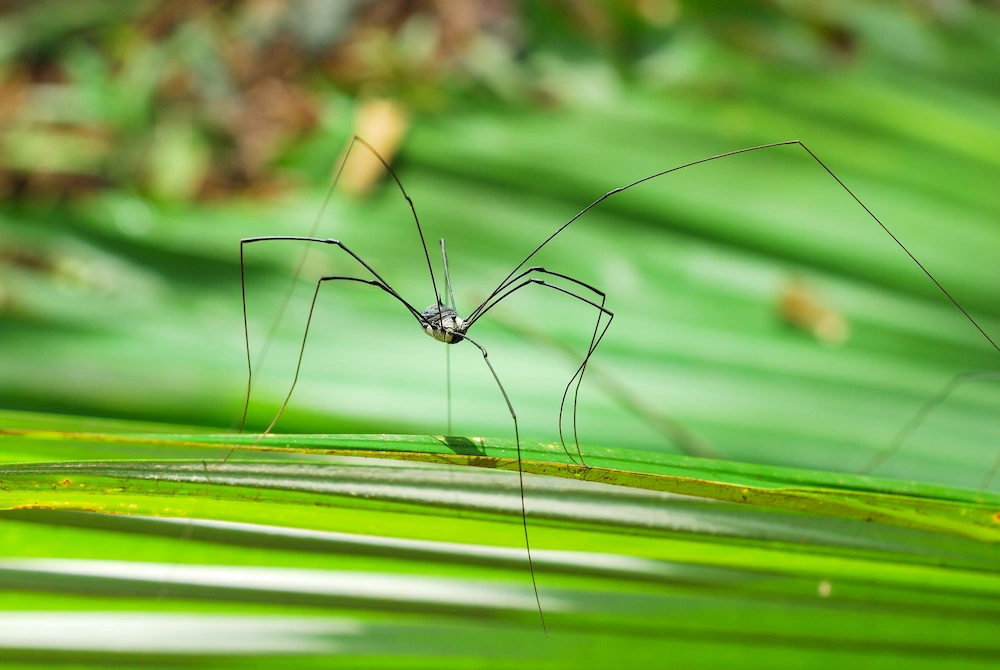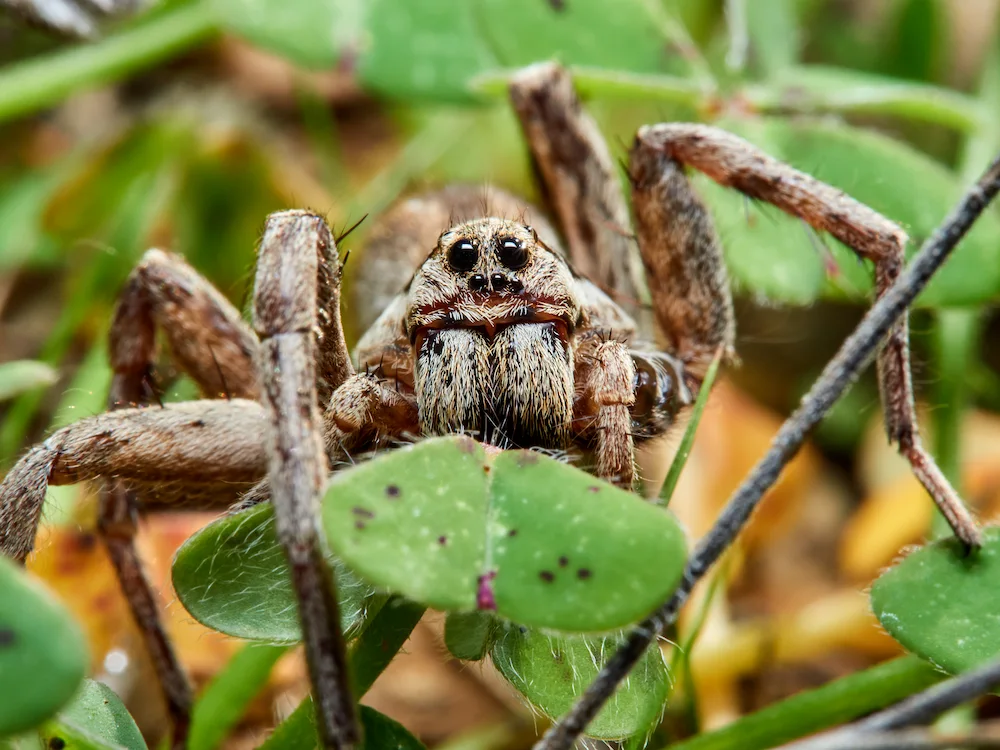Summary: Daddy longlegs, or harvestmen, are common pests that are usually grouped in with the general spider category. This blog dives into the lives of harvestmen to show that they aren’t technically spiders and they aren’t dangerous. Each section explores a different area of the pest’s life, including its features, abilities, habitat, beneficial diet, and misleading reputation. Pointe Pest Control provides effective treatments for spiders and many other household pests.
Daddy longlegs are one of the most misunderstood creatures in the animal kingdom. Between their reputation as an extremely poisonous creature (we’ll get to that later) and their separate classification from true spiders, these pests aren’t a welcome presence in most places.
But what are daddy longlegs anyway? And why are they so despised when they seem harmless? Let’s dive into the weird world of daddy longlegs and the reasons why they’re seen as dangerous pests despite their calm demeanor.
The Order Of The Opiliones

Let’s address the elephant (or creepy pest) in the room: daddy longlegs are NOT technically spiders. They are arachnids, but they are not the same creature as a typical spider. Since they don’t produce silk, they have to walk everywhere. Daddy longlegs have their own Order — Opiliones — and have over 6,600 species worldwide. These arachnids go by several names, including harvestmen, harvest spiders, daddy longlegs, and opilionids.
Daddy longlegs have distinct features that separate them from spiders. They have two eyes, one body segment, and eight legs. Two of the legs act as antennae to feel around their habitat. Their mouth is similar to a crab’s because it can break down and chew organic matter, like insects. The front claws (chelicerae) can technically bite humans, but harvestmen thankfully don’t like biting us. They would rather hide in a dark corner than confront their enemies.
Female harvestmen produce eggs, but they can’t stick them in webs for obvious reasons. Instead, they lay eggs in soil, under rocks, or in cracks. Their eggs are laid in the fall to hatch in the spring, so we see more daddy longlegs in the summer. You can actually tell the difference between male and female harvestmen. Males have small bodies with long legs, and females have large bodies with shorter legs. Both live for one to two years, depending on their environment.
What About This Spider?
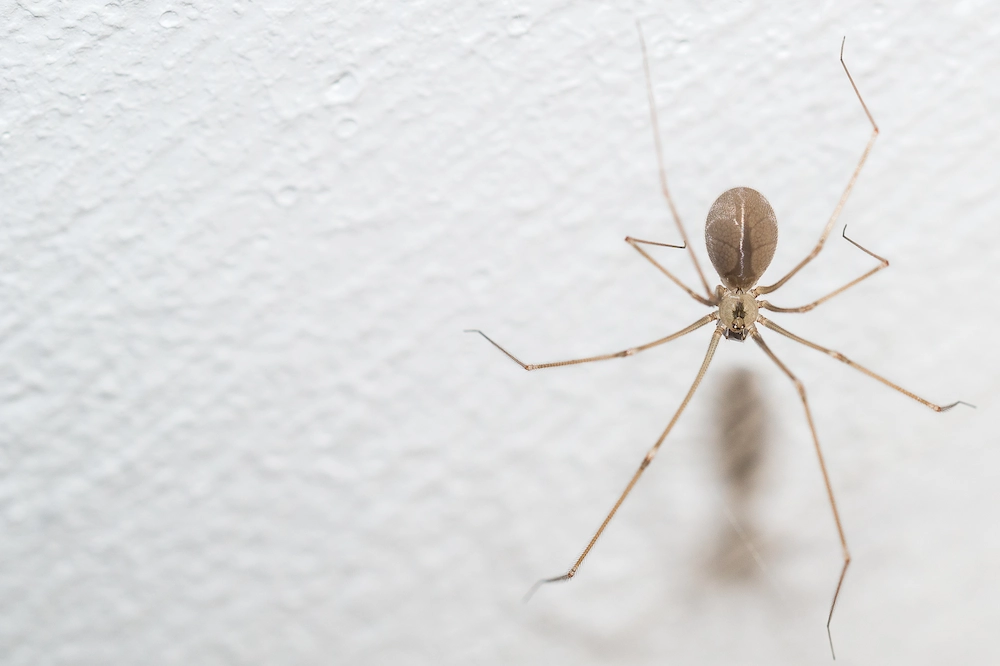
It’s worth noting that there is a spider called the daddy longlegs spider that is an actual spider. Harvestmen are mistaken for this spider due to the confusing name situation, but daddy longlegs spiders are in the Order Araneae and the Pholcidae Family. The daddy longlegs spider is also called the cellar spider and the carpenter spider. They’re extremely common in the Pacific Northwest, so you are probably familiar with these spindly spiders.
The easiest way to tell the difference between daddy longlegs and the daddy longlegs spider is to look at the body. The daddy longlegs spiders have the standard two-segmented body of true spiders, while daddy longlegs have the one segment. Cellar spiders also spin webs since they have the essential spinnerets, so keep an eye out for any webs surrounding the arachnid for another clue.
A Unique Pest
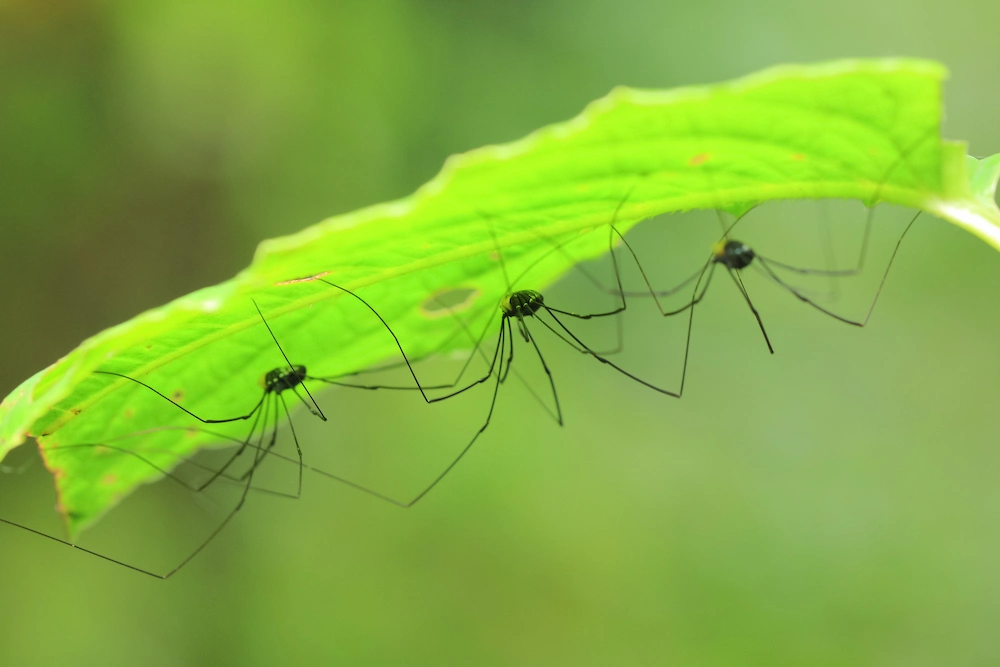
Daddy longlegs are known for their extremely long legs (obviously), but did you know that they can lose their legs and be totally fine? These arachnids participate in autotomy, the voluntary release of a limb. When a leg is caught by a predator, the daddy longlegs loses its leg in order to escape. They don’t seem to feel pain at this loss, but it’s not good for this pest to lose too many legs since they can only run to escape.
It’s also interesting to note that female daddy longlegs use autotomy to evade the males that they don’t want to mate with. If the male is too insistent for the female’s liking, she can rip one of his legs off as a warning. Ideally, he gets her message and starts searching for a new mate.
After a harvestman loses legs, they have a couple interesting options for mobility. One is stotting, where the arachnid bounces its body like a basketball with each step. After losing two legs, a harvestman will start bobbing. This is when they exaggerate their vertical movement to bounce their body in midair as they walk. These erratic movements make them tougher to catch, but we think they’re pretty entertaining too!
A Habitat Fit For An Opilionid
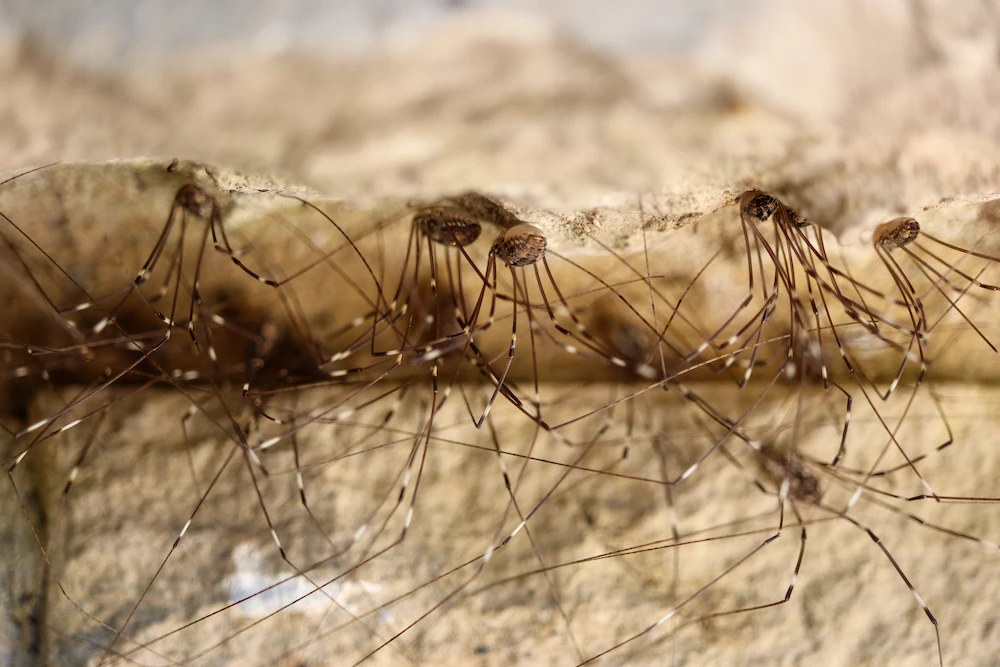
For being such flimsy pests, daddy longlegs are surprisingly versatile with their environments. They enjoy moisture and humidity — this is why we often see them in laundry rooms — but they also like dry heat and an arid climate. There isn’t a place that we won’t find daddy longlegs, but since they don’t want anything to do with us, it’s not the worst thing in the world.
In busy areas, harvestmen hide in cool, dark, and sheltered spaces that have access to food sources. Some of their favorites include eaves, trees, unfinished rooms, and windows. They’re also drawn to bathrooms because of the humidity. A solo daddy longlegs doesn’t require treatment since you can just squish it or vacuum it up. But pest control might be your preferred tactic if you see a cluster of these leggy arachnids.
That’s right: daddy longlegs sometimes group together in giant clusters. If the climate is too dry for too long, harvestmen huddle tightly together to retain humidity and prevent their legs from drying out. This activity is usually in the fall when it’s less humid. Daddy longlegs are usually safer in these clusters because they have strength in numbers and aren’t isolated as weak pests. The clusters look like weird sea urchins or clumps of hair because the arachnids let their lengthy legs hang down.
The Benefit Of Opilionids
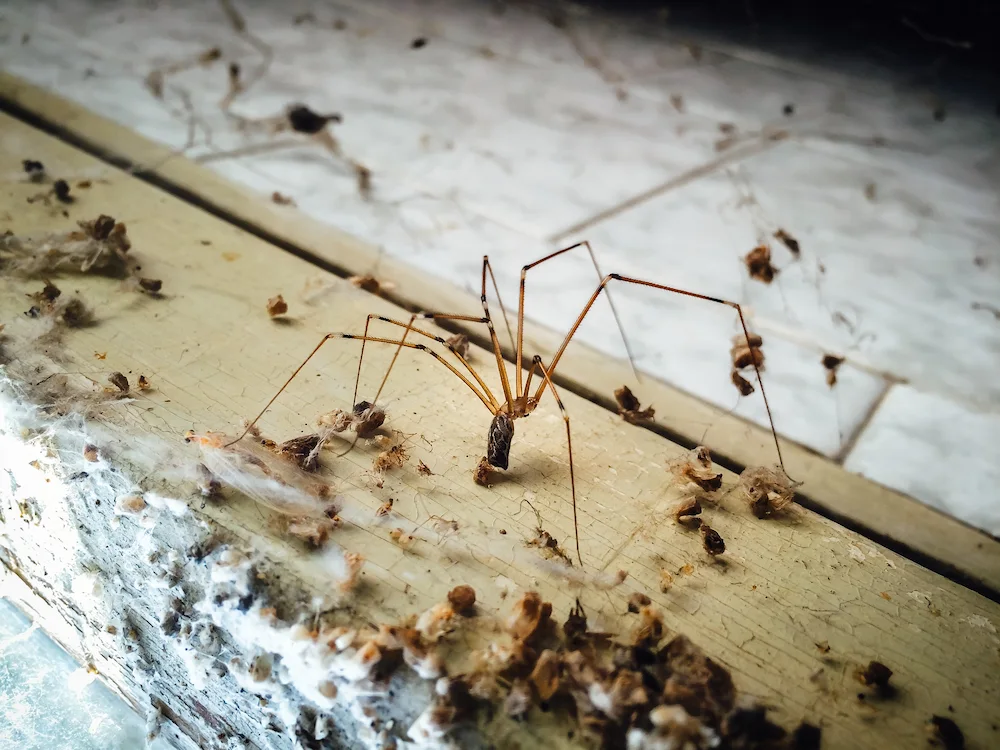
In addition to being harmless (yet creepy), daddy longlegs are technically beneficial to us. They eat smaller pests that cause problems for humans, so they provide some natural pest control. Since they don’t use webs, harvestmen have to hunt their prey or search for a new food source.
They live on organic items, and their favorites are aphids, animal matter, dead insects, decomposing vegetables, and bird droppings. Daddy longlegs gain more nutrients than most pests because they eat a wide variety of items, thanks to their chelicerae.
Are Daddy Longlegs Dangerous?
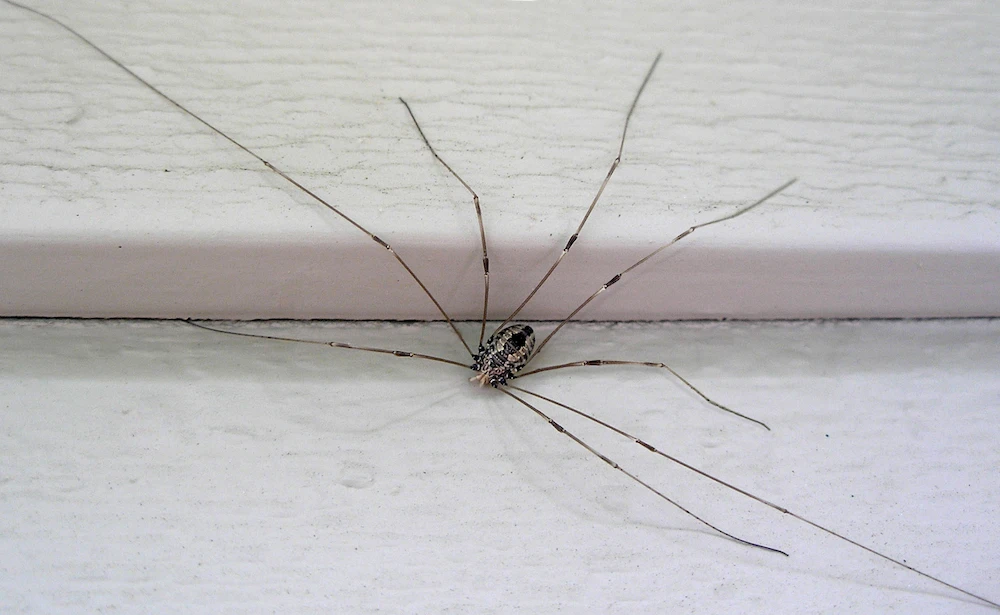
Alright, it’s time to discuss the myth we referenced earlier. The infamous “fact” about daddy longlegs is that they have lethal venom, and the only thing stopping them from killing humans is that their arachnid mouths are too small. We don’t know about you, but this tale definitely had us side-eyeing daddy longlegs throughout our childhoods!
It’s a relief to say that this “fact” is completely fictional. Daddy longlegs don’t have any venom, fangs, or dangerous abilities that would make them a threat to humans. Their only defense mechanism is a strong odor that keeps predators from eating the arachnids. The odorous chemical isn’t even fatal, so harvestmen don’t have a lethal move against anyone.
Spiders Are No Match For Pointe!
Daddy longlegs may be harmless to us, but spiders (and other creepy-crawlies) are a different story. At Pointe Pest Control, our licensed technicians solve each pest issue with the utmost efficiency and care. We begin every service with a full property inspection to ensure that we know about every area of pest activity. These findings help us create a treatment plan that’s customized to fit your pest control needs. We are committed to keeping you pest-free all year long. Contact us today for a free quote on our effective services that will keep the spiders away for the long run!
Citations
Daddy-longlegs. (n.d.). UC Riverside: Spider Research. Retrieved on November 4, 2024, from https://spiders.ucr.edu/daddy-long-legs
Kennerson, E. (2017, August 27). Daddy longlegs risk life, and especially limb, to survive. PBS. Available at https://www.pbs.org/newshour/science/daddy-longlegs-risk-life-especially-limb-survive (Accessed on November 4, 2024).
Kusmer, A. (2018, November 1). Why does it look like this national park building in Alaska is sprouting hair?. Atlas Obscura. Available at https://www.atlasobscura.com/articles/why-do-daddy-longlegs-cluster-together (Accessed on November 4, 2024).
Oswalt, D., Benson, E., & Zungoli, P. (2004, October 6). Daddy-longlegs. Clemson Cooperative Extension: Home & Garden Information Center. Available at https://hgic.clemson.edu/factsheet/daddy-longlegs/ (Accessed on November 4, 2024).

